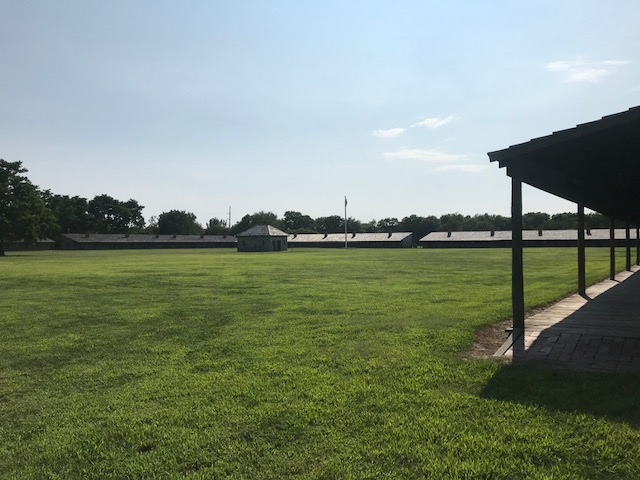Blair, Nebraska to Morton, Minnesota Lewis and Clark Interpretive Center, Sergeant Floyd Monument, Fort Atkinson and "Sod House on the Prairie"
Thursday, August 02, 2018
In Sioux City, we visited the Lewis
and Clark Interpretive Center.
It
is a very modern museum with robotic mannequins to portray key
figures who through their monologues reveal important facts about the
expedition. President Thomas Jefferson provides visitors with
an overview by repeating his instructions for Meriweather Lewis and
charging him with organizing and leading the "Corps of
Discovery". There was an extensive display of Indian
artifacts and exhibits related to Indian life and relations with the
American explorers. It is well worth the time invested in this fine
interpretive center. A few miles away is a 100 foot tall obelisk marking the gravesite of Sergeant Charles Floyd, Jr. who was the only man of the "Corps of Discovery" to die during the Lewis and Clark Expedition.
 |
| Lewis and Clark |
 |
| Sergeant Floyd Obelisk |
Later
in the day, we stopped to visit Fort Atkinson which was the first
American military fort on the Missouri River and pre-dated Fort
Leavenworth. Fort
Atkinson which stands at Council Bluffs which once formed the western
banks of the Missouri River. Today the river is well over a
mile to the east of the site of the first American fort on the
Missouri River. Construction on the fort began 200 years ago.
At one time, the fort was manned by 1/4 of the US Army which was
stationed there to protect the fur trade and early settlers from the
numerous Indian tribes which inhabited the surrounding plains.
The US
Army abandoned the fort in 1827 when Fort Leavenworth was established
further south on the Missouri River. The fort was recreated
over the past 30 years and is located in a State Park. It is a
truly amazing reproduction and site of historical re-enactments.
 |
| Fort Atkinson |
We
also made a brief stop at the "Sod House on the Prairie"
near Sanborn, Minnesota. There two sod houses re-create pioneer
life on the American prairies during the 1880s.
The
McCone family has constructed replicas of sod and wooden houses which
provided shelter to early settlers on the American prairies. A
"sod dugout" and "sod house" are the most
interesting structures. They were built using native prairie
grass sod using techniques in practice on the plains during the late
19th Century. The walls are two feet thick. The interior
walls of the "sod house" were finished in white chinking
similar to that used to fill the gaps between logs in log cabins.
Most amazing was the furniture and objects of daily life found in
each of the structures. It was well
worth the slight detour to get a better appreciation of what life
might have been like for early settlers on the plains. Laura
Ingalls Wilder (Little House on the Prairie) lived nearby.
 |
| Sod House |
 |
| Sod House Interior |
No comments :
Post a Comment
Leave A Comment...